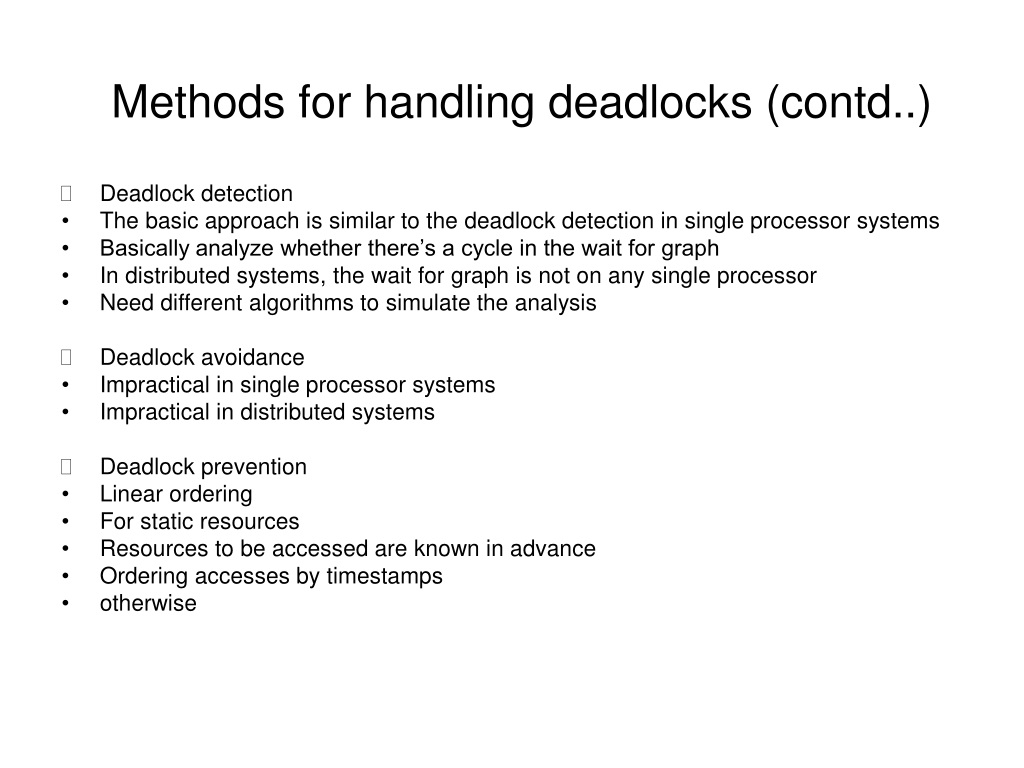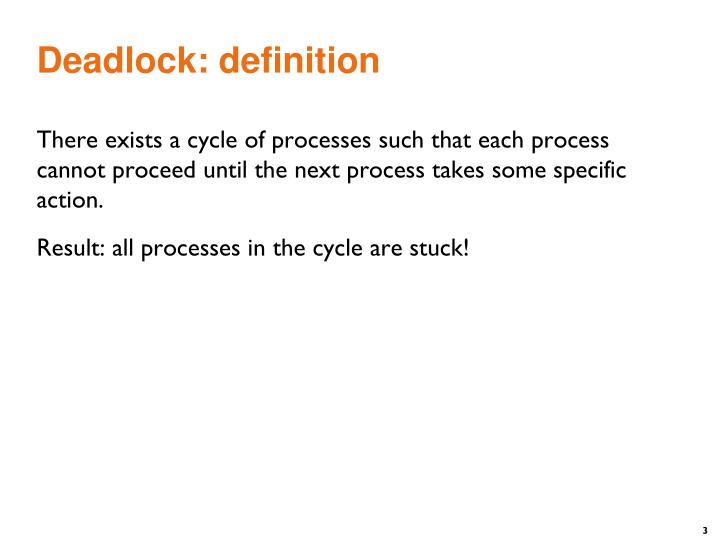

#Deadlock definition code#
Alter the application code to prevent deadlocks by always locking rows in the tables in the same order.Examples of Potential Deadlock in a sentence.Use these SQL statements to identify the particular piece of code that is having problems.Identify the SQL statements in both the current session and the waiting session(s).

#Deadlock definition update#
SELECT ID FROM DEADLOCK_2 WHERE ID = 1 FOR UPDATE The error message contains a reference to a trace file, whose contents indicate the SQL statements blocked in both the session that detected the deadlock and the other blocked sessions. More info in file c:\oracle\product\10.2.0\admin\db10g\udump\db10g_ora_c.

In addition to the deadlock error reported to the session, a message is placed in the alert log. ORA-00060: deadlock detected while waiting for resource A typical deadlock error is displayed below. The call to the DBMS_LOCK.SLEEP procedure is only present to give you enough time to switch sessions.Įventually, one of the sessions will detect the deadlock, rollback its transaction and produce a deadlock error, while the other transaction completes successfully. The second piece of code does the same thing but in reverse, locking a row in the DEADLOCK_2 table, then the DEADLOCK_1 table. The first piece of code gets a lock on a row in the DEADLOCK_1 table, it pauses for 30 seconds, then attempts to get a lock on a row in the DEADLOCK_2 table. Start two SQL*Plus sessions, each logged into the test user, then run the following pieces of code, one in each session. This article shows the steps necessary to identify the offending application code when a deadlock is detected. Typically, deadlocks are caused by poorly implemented locking in application code. Oracle automatically detects and resolves deadlocks by rolling back the statement associated with the transaction that detects the deadlock. A deadlock occurs when two or more sessions are waiting for data locked by each other, resulting in all the sessions being blocked.


 0 kommentar(er)
0 kommentar(er)
